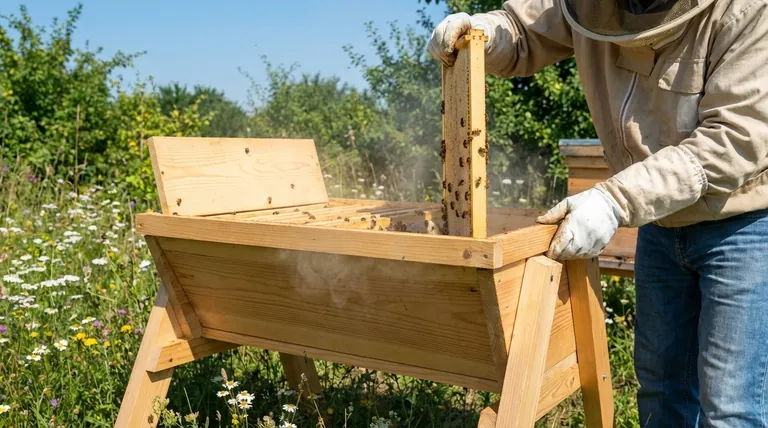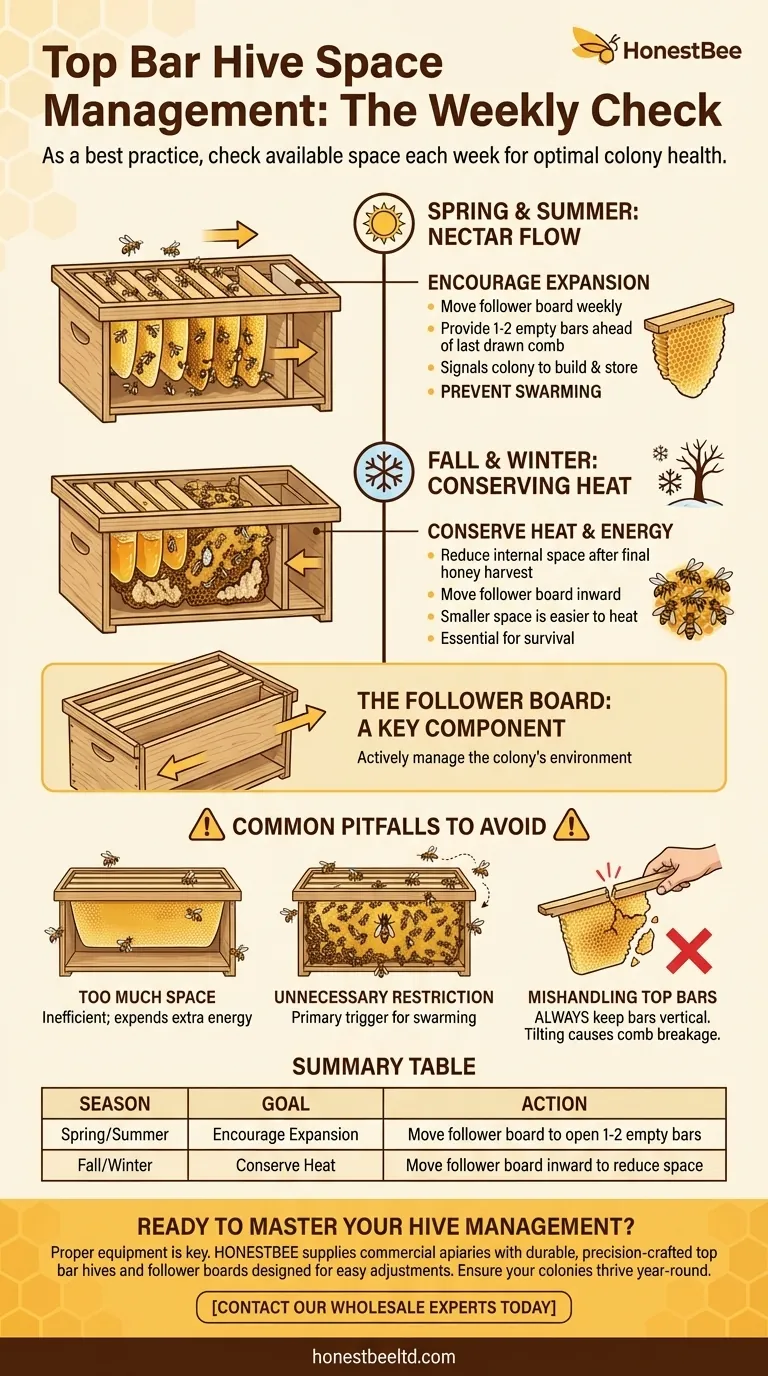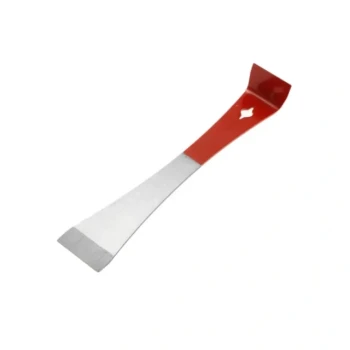As a best practice, beekeepers should check the available space in a top bar hive each week. This regular inspection allows you to make precise adjustments with the follower board, giving your colony the optimal amount of room to expand during a nectar flow or to consolidate for winter.
The weekly hive check is not merely about measuring empty space. It is about actively managing the colony's environment to encourage growth, prevent swarming, and ensure the bees can efficiently thermoregulate throughout the year.

The Role of the Follower Board
A key feature of the top bar hive is the follower board, which acts as a movable wall inside the hive body. Properly managing this component is fundamental to the success of the colony.
Encouraging Expansion in Spring and Summer
During a strong nectar flow, a healthy colony can build comb and expand with surprising speed.
A weekly check allows you to stay ahead of their needs. By moving the follower board to open up more space, you give the bees a clear signal to continue building comb and storing resources.
Conserving Heat in Fall and Winter
Once the main honey flow ends, the colony's goal shifts from expansion to survival.
Reducing the hive space by moving the follower board inward helps the colony immensely. A smaller, more compact space is easier for the bees to keep warm, conserving critical energy and food stores during the cold months.
Common Pitfalls to Avoid
The weekly adjustment is a balancing act. Misjudging the colony's needs can create problems that a consistent inspection schedule helps prevent.
Providing Too Much Space
Giving the bees a vast, empty space to manage is inefficient. The colony must expend extra energy to patrol and heat this unused area, which can slow its development.
Restricting Space Unnecessarily
Failing to provide enough room is a primary trigger for swarming. If the queen feels she is running out of space to lay eggs, the colony may begin preparations to divide, costing you a significant portion of your workforce.
Mishandling the Top Bars
During any inspection, the integrity of the comb is paramount.
When you lift out a top bar, you must always keep it in a vertical position, like a picture in a frame. Tilting the bar can cause the delicate, unsupported comb to break away, destroying brood and honey stores.
How to Apply This to Your Hive
Your management goal will change with the seasons, and your use of the follower board should reflect that.
- If your primary focus is maximizing growth during a nectar flow: Move the follower board weekly to provide one or two empty bars ahead of the last drawn comb.
- If your primary focus is preparing the colony for winter: Move the follower board to reduce the internal space right after the final honey harvest of the season.
Properly managing your hive's space through these simple, regular checks is the key to maintaining a healthy and productive colony.
Summary Table:
| Season | Goal | Action |
|---|---|---|
| Spring/Summer | Encourage Expansion | Move follower board to open 1-2 empty bars |
| Fall/Winter | Conserve Heat | Move follower board inward to reduce space |
Ready to master your hive management? Proper equipment is key to successful weekly inspections. HONESTBEE supplies commercial apiaries and beekeeping equipment distributors with durable, precision-crafted top bar hives and follower boards designed for easy adjustments. Ensure your colonies thrive year-round—contact our wholesale experts today to discuss your equipment needs!
Visual Guide

Related Products
- Long Langstroth Style Horizontal Top Bar Hive for Wholesale
- HONESTBEE Professional Multi-Functional Hive Tool with Ergonomic Wood Handle
- HONESTBEE Advanced Ergonomic Stainless Steel Hive Tool for Beekeeping
- HONESTBEE Professional Long Handled Hive Tool with Precision Cutting Blade
- Multi-Function Plier-Style Frame Grip Hive Tool
People Also Ask
- What are the benefits of the top bar hive? A Guide to Ergonomic, Natural Beekeeping
- What are the most popular types of hives besides the Langstroth? Top Bar & Horizontal Hives Explained
- How are entrances designed in top bar hives? Master Beehive Layout for Maximum Honey
- What is a top bar bee hive? A Natural, Low-Stress Beekeeping Solution
- What are the advantages of a top bar hive? Simpler, Bee-Centric Beekeeping for All



















